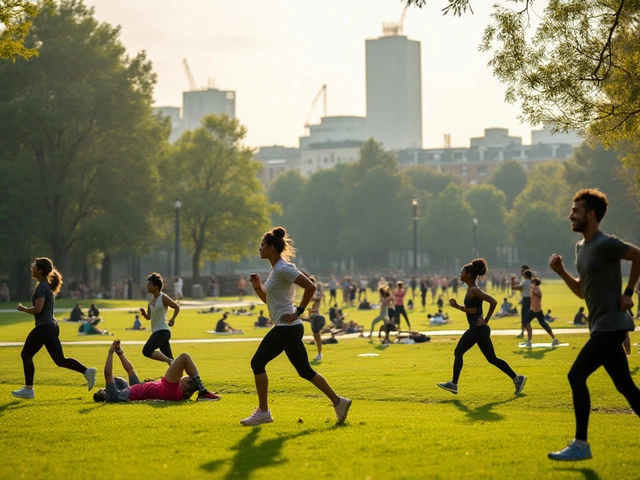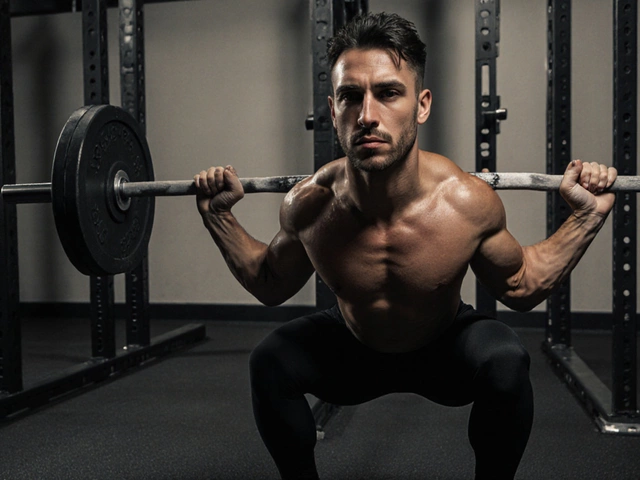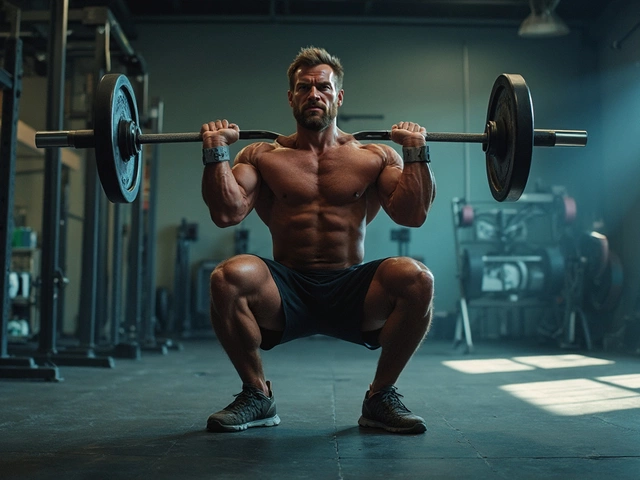Top 3 Essential Gym Workouts for Strength and Fitness

When stepping into the gym, knowing which workouts to prioritize can make a world of difference in achieving your fitness goals. While the possibilities are endless, three core workouts stand out for their unmatched benefits in building strength, endurance, and flexibility.
These fundamental exercises are not only time-tested but also form the backbone of successful training regimens for athletes and fitness enthusiasts alike. They focus on compound movements, which recruit several muscle groups at once, offering efficiency and effectiveness in every session.
Relied upon for decades, these exercises provide more than just muscle growth; they're crucial for enhancing coordination and stability, promoting better posture, and boosting metabolism. Incorporating these into your workout routine will set you on the right path toward a fitter, healthier version of yourself.
- The Power of Compound Exercises
- Mastering the Squat
- The Versatility of Deadlifts
- The All-Inclusive Benefits of Bench Press
- Crafting Your Workout Routine
The Power of Compound Exercises
At the heart of effective strength training lies the compelling power of compound exercises. These movements, celebrated for their ability to engage multiple muscle groups simultaneously, are the bedrock of any strong workout regimen. Unlike isolation exercises that zero in on a single muscle, compound exercises prompt a symphony of muscles to work in harmony. This not only accelerates muscle development but also optimizes the efficiency of your workout time.
Consider the renowned squat, a quintessential gym workout that activates the quadriceps, hamstrings, and glutes while enlisting the core for stabilization. Such exercises mirror the functional movements we perform in daily life, from standing up to lifting objects, making them indispensable for enhancing day-to-day strength and mobility. With compound exercises, each repetition is multifaceted, contributing not just to muscle tone but also to improved coordination, balance, and joint health.
Furthermore, by engaging multiple muscles at once, compound exercises drastically increase the metabolic demand on the body. This heightened energy expenditure can translate into a greater calorie burn both during and after your workout, aiding in weight management and body composition goals. As these exercises often require stability and control, they also play a vital role in injury prevention by fortifying the muscles and tendons around joints. Utilizing tools like barbells, dumbbells, and kettlebells can further enhance these effects, adding variety to your fitness routine.
"The integration of multi-joint exercises in training programs can significantly boost athletic performance and physical health," states a study published in the Journal of Strength and Conditioning Research, underscoring the scientific support behind compound exercises.
Starting with foundational moves like deadlifts, bench presses, and clean and presses can set the stage for a robust fitness journey. These exercises not only serve those new to the gym but continue to challenge seasoned athletes, offering room for progression through added weight and improved form. As the body's largest muscles are activated, the hormonal response is also notable, promoting growth factors and amping up testosterone levels, key drivers for muscle growth and recovery.
But beyond the tangible physical gains, the mental benefits of engaging in compound exercises shouldn't be overlooked. These workouts demand focus and concentration, offering mental clarity and a sense of achievement as one conquers each set. Integrating these crucial movements into your weekly workout plan will ensure a holistic approach to strength training, offering a full-body workout that leaves no muscle untouched.
Mastering the Squat
The squat has often been hailed as the king of exercises, and for very good reason. It's a fundamental move that, when done correctly, recruits multiple muscle groups including the glutes, quads, hamstrings, and core. The beauty of the squat lies in its simplicity and effectiveness, making it a staple in any gym workout routine. Whether you're aiming to build strength, enhance athletic performance, or simply improve daily mobility, the squat is indispensable.
Executing the perfect squat begins with form. Stand with your feet shoulder-width apart and keep your chest up, while maintaining a straight back. As you lower your body, ensure your knees track over your toes and your weight is balanced on your heels. Depth is crucial – aim to lower yourself until your thighs are at least parallel to the ground, imitating the motion of sitting back into a chair. Breathing out as you stand up will help maintain your balance and control, ensuring you engage the correct muscles.
As you progress, consider incorporating variations such as the front squat or overhead squat to target different muscle groups and add variety to your exercise routine. If you're looking to boost explosiveness, try the jump squat – it's great for revving up your metabolism while working on power. Stability and mobility exercises should accompany regular squatting to reinforce joint health and reduce the risk of injury. Stay aligned by incorporating flexibility drills, like hip flexor stretches, into your warm-up and cool-down routines.
"Never sacrifice form for added weight. Quality over quantity is the mantra to live by when approaching squats," advises strength coach Mark Rippetoe.
Squats also play a crucial role in promoting bone health. Weight-bearing exercises like the squat can increase bone density, reducing the risk of osteoporosis as you age. Additionally, they ramp up calorie burn by activating large muscle groups. Did you know that squats can even benefit your cardiovascular fitness? When performed in higher repetitions, they elevate the heart rate, improving overall stamina.
The variety of squats available caters to all skill levels. Beginners might prefer starting with bodyweight squats, gradually progressing to barbell and weighted squats. Intermediate lifters can explore exercises like the Bulgarian split squat, emphasizing balance and unilateral strength. For the seasoned lifter, working in resistance bands or chains can add a new level of intensity and muscle activation. Always start with what feels comfortable, and slowly escalate as your form perfects and confidence builds.
Common Squat Mistakes to Avoid
- Allowing knees to cave inward under pressure. Stay vigilant about knee alignment to prevent injury.
- Leaning too far forward can lead to back strain. Keep your chest up and eyes forward.
- Rising on your toes signifies improper weight distribution. Ensure you push through the heels to work the posterior chain effectively.
Remember, squats are more than just a leg exercise. They demonstrate an efficient form of strength training that taps into every muscle in the body, inviting growth, power, and improved fitness. Be patient, practice consistently, and in time, you'll undoubtedly become proficient in this classical movement.
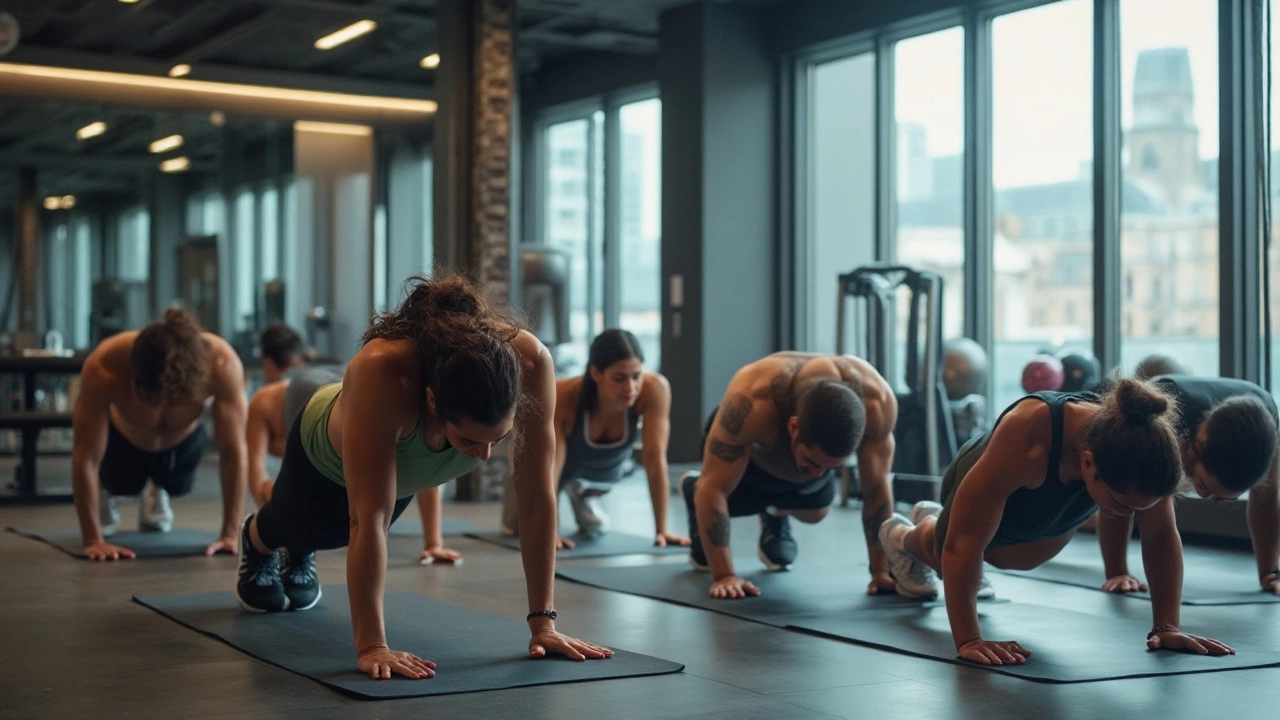
The Versatility of Deadlifts
The deadlift is not just another movement you perform at the gym; it is a powerhouse of an exercise that delivers unparalleled benefits to those who include it in their fitness routine. At its core, the deadlift is a simple lift––you pick up a heavy barbell from the ground and stand up with it. Yet, its simplicity belies the comprehensive workout it provides for the entire body. This exercise is hailed as a master of multi-muscle engagement, demanding strength not just from your legs, but from your back, core, and even your grip. Touted as the king of power lifts, it propels muscle growth and builds a strong foundation that translates well into everyday activities and other sport-related skills. Whether you're rearranging furniture or trying out a new sport, the strength and resilience developed from deadlifting pay dividends.
A remarkable aspect of deadlifts lies in their adaptability to different fitness levels and goals. Beginners to advanced athletes can adjust weights and techniques, making it suitable for many. It's worth noting that the deadlift provides functional strength that goes beyond aesthetics and aids in injury prevention. By reinforcing the posterior chain, it helps counterbalance the overemphasis often placed on the anterior muscles through modern lifestyle habits, such as prolonged sitting. This entire movement's effect is profound enough, as research from journals like the National Strength and Conditioning Association notes how such exercises can dramatically improve posture and functional strength.
Albert Lee, a renowned strength coach, once said, "The deadlift teaches us that the world is something we can take in our hands and lift."
There are also different variations of the deadlift to consider, each offering distinct benefits. The conventional deadlift targets the back and hamstrings, while the sumo version reduces stress on the lower back, making it a favored choice for those with back concerns. Then there's the Romanian deadlift, which emphasizes hamstring flexibility and glute engagement. Incorporating different types even within a single workout routine can help target weaknesses and ensure balanced development across muscle groups. As you explore these variations, the role of proper form cannot be overstated. Ensuring the right posture and movement is essential to maximizing the benefits while minimizing the risk of injury.
For those keen on tracking their progress, it's rewarding to measure the benefits of consistently integrating deadlifts into your routine. Observable metrics such as increased lift loads and improved lifting form provide practical motivation. In a study outlining optimal strength improvements, regular deadlifting showed enhanced athletic performance across various domains, reinforcing the importance of techniques like grip strength and core stability. Here's a helpful stat: seasoned lifters have reported up to a 65% increase in their overall athletic prowess after incorporating deadlifts into their regimen. These figures underscore the potential of this transformative exercise.
Incorporating deadlifts into your exercise routine calls for mindfulness and a progressive approach. It's often advisable to begin with lighter weights, focusing keenly on form before elevating the challenge by adding more weight. A gradual increase ensures your body adapts to the demands in a safe manner. This painstaking attention to detail can't be overstated as it safeguards well-being while achieving fitness milestones. Treating each deadlift session with the respect it deserves facilitates tremendous long-term benefits.
The All-Inclusive Benefits of Bench Press
The bench press is more than just a measure of upper body strength; it's a comprehensive workout that benefits various muscle groups, improving both form and function. This iconic exercise primarily targets the chest muscles, specifically the pectoralis major, but it doesn't stop there. It recruits the shoulders (deltoids) and the arms (triceps), ensuring a well-rounded strengthening of the upper body. By engaging so many muscles at once, the bench press helps to build muscle mass, improve endurance, and enhance overall body balance. It acts as a key player in many fitness regimens because of its versatility and great impact on building core strength.
Consistent practice of the bench press can also promote good posture. By stimulating the muscles that are commonly inactive during sedentary activities like sitting, bench pressing encourages a straighter back, minimizing the risk of posture-related aches. It's particularly crucial in today’s digital age where many face the perils of sitting for hours. Of course, it's not just about moving the weight. Ensuring the right form is essential. Your back should remain firmly pressed against the bench, feet planted flat on the ground, creating a stable base that prevents injury. This form optimization not only facilitates a safe workout environment but also maximizes effectiveness.
Interestingly, the bench press is often a staple in strength-testing as well. Gyms worldwide use it as a benchmark to assess upper body power due to its straightforward yet challenging nature. Some might remember a quote by the legendary Arnold Schwarzenegger:
"The bench press is like the guillotine; if you have the guts, you do it right, and if not, you better get ready for the consequences."Such recognition from fitness experts solidifies its place as an indispensable exercise. For those looking to diversify, variations such as incline or decline bench presses can offer alternative challenges and further engage different muscle areas, preventing plateaus in progress.
For enthusiasts aiming for precise gains, considering the right amount of weight and repetitions is important. As a general rule, fewer reps with heavier weights boost strength and power, while more reps with lighter weights target endurance and muscle tone. A typical regimen could be three sets of 8 to 12 reps, aligning with personal goals whether it’s strength training or improving overall fitness. Combining bench presses with a balanced diet and consistent rest can lead to impressive results, showcasing improvements not only in strength but also in muscular definition and physical appearance. Don't forget, each session is a step closer to achieving that solid, sculpted upper body you’ve been working towards.
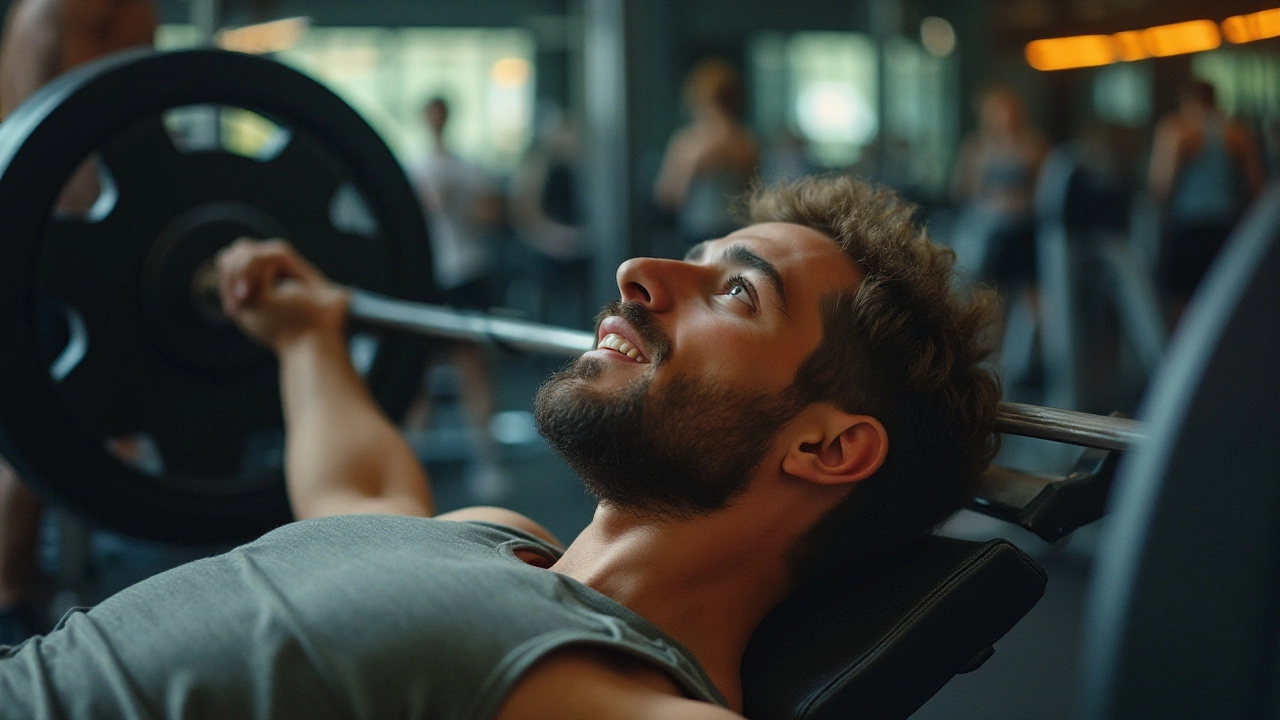
Crafting Your Workout Routine
Building a strong and effective workout routine is a journey that starts with understanding your personal fitness goals. Whether you're aiming to build muscle, increase endurance, or improve agility, each goal sets a different path for your training plan. Using the foundation of gym workouts like squats, deadlifts, and bench press, you can tailor a program that suits your needs. It's important to assess your current fitness level and any limitations you might have, allowing for a realistic and sustainable approach to training. Start by setting realistic, achievable goals, considering both short-term and long-term milestones.
Start your routine with a balanced mix of strength training and cardiovascular activities. A typical week could include three to four days focused on strength exercises such as those mentioned earlier, which target major muscle groups. Cardiovascular workouts, including jogging, cycling, or swimming, can be integrated into your plan between strength days to enhance your stamina and heart health. It's crucial not to overlook the importance of rest days. Recovery is where muscles repair and grow, ensuring you're ready for the next workout session. Listen to your body, and understand that sometimes less can be more if it prevents injury and promotes longevity in your fitness journey.
Balancing Volume and Intensity
When designing your workout plan, consider the volume and intensity of your sessions. Volume refers to the number of sets and repetitions you perform, while intensity pertains to how heavy or challenging the exercise feels. To build muscle and strength, focus on lower repetitions with higher intensity (weights), whereas higher repetitions with moderate intensity are more suited for endurance and toning. For beginners, it's wise to begin with a focus on form, progressively increasing intensity as technique solidifies. Crafting a perfect balance keeps your workouts effective and reduces the risk of overtraining."Exercise should be regarded as a tribute to the heart." —Gene TunneyMonitoring progress is vital in fine-tuning your routine. Keeping a workout journal provides insights into your progress and helps identify patterns or areas needing improvement. Regularly revisit your goals and modify your workouts accordingly to keep them both challenging and rewarding. This proactive approach promotes continuous improvement and prevents plateaus.
Utilizing Resources and Seeking Guidance
A plethora of resources are available to aid in constructing your ideal workout plan. Online platforms, fitness apps, and community groups offer a wealth of information and support. Engaging with these resources can introduce you to new exercises, workout tips, and motivation from fellow fitness enthusiasts. Personal trainers are another excellent option, particularly for those new to exercising or anyone needing extra guidance to perfect their technique and boost confidence. They ensure you're performing exercises correctly and efficiently, reducing the risk of setbacks caused by improper form.Finally, remember the role nutrition plays in any fitness routine. Fuel your workouts with balanced meals containing the right mix of macronutrients like proteins, carbs, and fats. Adequate hydration also supports performance and recovery, so pay close attention to your water intake before, during, and after exercise. Together, a strong routine and a mindful diet create a comprehensive approach to achieving your fitness goals.

